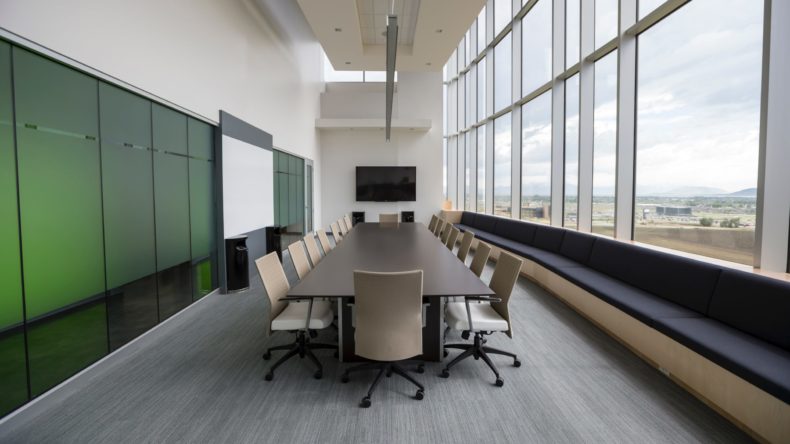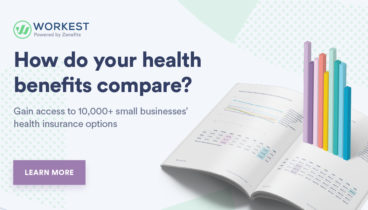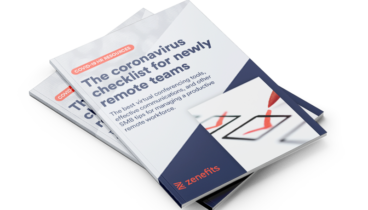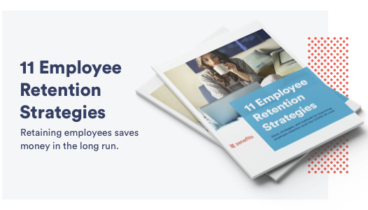Provide comfort and security to your employees as they return to the office by implementing the correct messaging, policies, and actions.

Here's what you need to know:
-
You’ll want to assure you’re doing everything possible to safeguard staff members — including temperature checks and cleaning and disinfecting procedures
-
Post signage everywhere — not just the restrooms — reminding employees to wash their hands rigorously or use hand sanitizer whenever they touch common areas
-
Taking time off when sick will need to be a requirement, not an option
-
Reminders, posters, email blasts, and other communications are needed to provide messaging on staying healthy and safe
-
For those who have reason to be concerned, you should be ready to make accommodations
-
A crisis management plan, that specifically addresses situations like pandemics, is necessary
The promise of business normality is on the horizon, and companies are looking to bring back staffers safely and comfortably. As we transition from fully remote to partially remote to part-time or full-time, lessons learned during the outbreak should resonate within your company. The way we do business has changed, with a new focus on safety, health, and productivity. Adjusting to the new normal will be critical to succeed.
Some areas to consider may be physical: how we treat spaces and keep them safe and secure. Some may require a redesign of the spaces — others a reimagining of how to use them. For employees, a sense of comfort and security will need to be established. Along with the stress of returning to the morning commute, there will likely be challenges in getting back to an office routine. For SMBs, the easier you can make the transition, the better for business and staff members.
Prioritize safety first
You’ll want to assure you’re doing everything possible to safeguard staff members.
Employee and customer safety has always been important, but with a new focus on invisible threats, putting staff members at ease is critical. You’ll want to assure you’re doing everything possible to safeguard staff members. Temperature checks at entrances should be the new normal at every organization. Cleaning and disinfecting procedures are top of the list — but be creative, as well.
Consider:
- Staggered work shifts and lunch and break times to keep down crowds in any given space
- Removing seating in your break area or marking off some of the chairs with “do not sit here” to keep employees distanced
- Keeping interior doors propped open to avoid having to touch handles.
- Purchasing a few inexpensive printers for workers to keep on their desk, instead of using shared printers
If you can, create 6-foot distancing marks on floors and carpet with tape. Designate walkways and halls one-way and add plastic barriers wherever possible. Companies will also need signage to remind staff of the new one-way streets and protocols.
Encourage employees to bring their own beverages and beverage bottles to and from work every day. If the employee kitchen is a must, make sure it’s stocked with single-use cups, plates, and utensils.
If employees can’t bring their own mask to work, or they forget, make sure you have supplies available.
Keep it clean
If you can maintain stock, keep hand sanitizer everywhere possible — but especially in lunch/break areas, common areas (like shared printers), and near vending machines. Post signage everywhere — not just the restrooms — reminding employees to wash their hands rigorously or use a dollop of hand sanitizer whenever they touch common areas. Signs that remind employees not to touch their face and to sneeze into their elbow demonstrate your commitment to keeping the office sanitary for their protection. Additional cleaning crews and protocols may be necessary to clean up after lunch breaks and throughout the building.
Advise employees to stay home when sick
In the past, when employees came to work sick they ran the risk of infecting others and their productivity was low. Many companies tolerated presenteeism because employees didn’t have available sick time to leverage. Today’s risk simply cannot allow sick workers on the job. Taking time off when sick will need to be a requirement, not an option. As will leaving work immediately if staffers show signs of illness.
Today’s risk simply cannot allow sick workers on the job. Taking time off when sick will need to be a requirement, not an option.
The virus can be spread by people who show no symptoms. Employees who are exposed to a COVID-19 positive person must also stay away from the workplace —there should be no wiggle room on this.
If you don’t currently have a sick time policy, it’s time to create one. Advising employees that staying home when sick is not optional is critical to the overall health of your workplace. For businesses considering offering health benefits, now is also the time to take the plunge. The cost to your organization for healthcare coverage may be minimal compared to the cost of an outbreak in your company.
Message clearly and often
In addition to creating safety protocols, it’s important to keep them top-of-mind for staffers. Before they return to the workplace, let staffers know the protocols you’ve put in place for their safety. Answer any questions and concerns thoughtfully and try to address any hazards employees may have. Once inside, reminders, posters, email blasts, and other communications are needed to keep the healthy wave rolling. But messaging goes beyond the written word to actions.
Signage should notify consumers that masks and distancing requirements are in place to safeguard their health and your employees.
Customers will be required to take the safety of your employees as seriously as you do. Signage should notify consumers that masks and distancing requirements are in place to safeguard their health and your employees. Consider locking some doors and steering customers through a main entrance that’s staffed with someone who can assure masks are being worn. If you’re a small shop, a locked door with a bell that customers can ring so you can be sure they’re masked before entering is an easy fix. One way aisles can help keep customers distanced, as can distance signs at checkout.
Contractors and third party affiliates will also need to be on notice. If your delivery dock workers are in regular contact with others, you’ll need to assure they’re masked when they make their stops. Keep sanitizer or a wash station nearby so they can clean up after every delivery.
For businesses that rent space, your relationship with landlords will need to be more hands-on. You may be able to keep your office clean, but work with them to establish more frequent cleaning protocols for common rest rooms, elevators, stair rails, and lobby areas. Air duct cleaning frequency and higher rated filtration for HVAC should be on your list of priorities for the property manager, as well.
Evaluate your own actions
Finally, consider what messages you’re sending to employees with your own behaviors. If you’re wearing a mask when out of your office, and rigorously hand washing and distancing whenever possible, you set the example and the tone. Unnecessary meetings should be a thing of the past if emails can suffice. Reminding employees to stay home if sick, and doing so yourself, is a powerful tool to keep your workplace safe. The message you send is that the rules apply to everyone — including you — and that safety comes first.
Rest assured
There are no guarantees, but you’ll want to do everything possible to make the workplace safe. Still, there will be concerns. Many staff members are anxious to get back to work: others are fearful. If someone says they’re generally afraid, it will be important to listen to and try to allay those fears.
For those who have reason to be concerned, you should be ready to make accommodations.
For those who have reason to be concerned, you should be ready to make accommodations. A staff member who is at high risk for complications should they contract the virus will need more consideration. It will be important to work with immunocompromised or high-risk staff members to assure they can come back safely. If not, remote work or extended leave of absence might be the best solution.
Be ready for potential second wave
A second wave of COVID-19, or any other crisis, could be looming. If your business isn’t ready for it, you’re behind the curve. A crisis management plan, that specifically addresses situations like pandemics, is necessary. It translates you take employee safety seriously and are ready to act if needed. Creating a plan begins with assessing risk, then coming up with solutions to minimize or eliminate it. You’ll want to develop a cohesive plan to deal with infection in your workplace and additional shutdowns or slowdown mandates — even natural disasters. The better prepared you are the faster you can act. Communicate plans with employees to make sure everyone’s ready for whatever comes your way.
With luck, the workplace will return to normal soon, but it will never be the normal of 2019. And that might be a good thing. As we’re more aware of threats to health and business, we can be more prepared to stay healthy and safeguard the organization.





